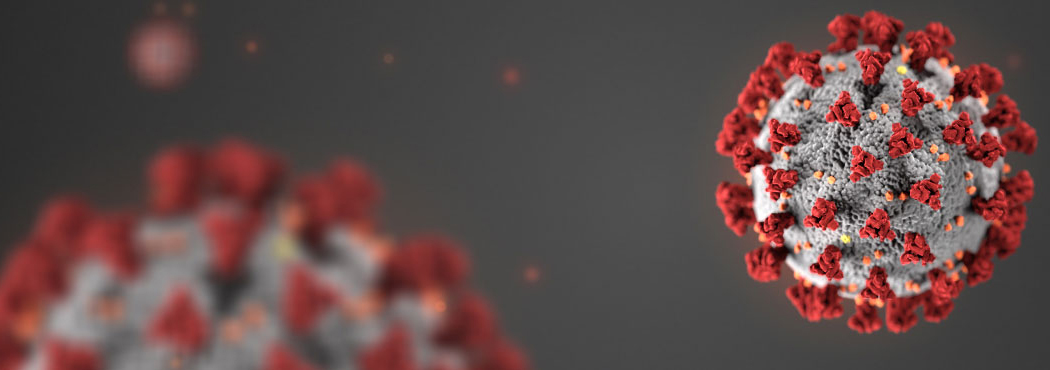Tudi Mechanical System’s (TUDI) core business is “creating environments that are conducive to the long-term health and productivity of our clients and their associates.” With the current pandemic, we have received considerable interest in the role HVAC systems play in the transmission of COVID-19.
Regardless if you work in healthcare, commercial, or manufacturing, indoor air quality has become a real consideration for the safety of employees, clients and patrons. According to the World Health Organization (WHO), as of April 2020, “current evidence suggests, COVID-19 virus is primarily transmitted between people through respiratory droplets and contact routes. Airborne transmission is different from droplet transmission as it refers to the presence of microbes within droplet nuclei, which are generally considered to be particles <5μm in diameter, and can remain in the air for long periods of time and be transmitted to others over distances greater than 1 m.”
Other prominent organizations such as the Center for Disease Control (CDC) and American Society of Heating and Air-Conditioning Engineer (ASHRAE) suggest aerosol transmission is sufficiently likely, however; they acknowledged direct contact mechanisms of virus dissemination are more significant. Regardless, it’s important to understand the movement and concentration of aerosols and how they can be influenced by the HVAC system.
Below are some recently asked questions and responses to help understand how your HVAC system may or may not affect the transmission of COVID-19. Most of these recommendations may be accomplished in-house and will differ slightly based on the configuration of your system.
Recently Asked Questions:
- As a precautionary measure during this pandemic, the ASHRAE and the CDC suggest, “improving central air filtration to the MERV-13 or the highest compatible with the filter rack, and seal edges of the filter to limit bypass” if possible. Furthermore, “The system filters should be rated for the maximum filter efficiency available while not adding more restriction in the HVAC systems to cause reductions in system airflow to the point that the system can no longer maintain indoor temperature and humidity set points or desired pressure relationships.”
- The standard return air filter typically has a Minimum Efficiency Reporting Value (MERV) of 8 and is 90% efficient on particles that are 3 to 10 micrometers in size.
- Depending on the configuration of the system, it is not as easy as changing the MERV 8 filters out with a higher efficiency filter. As referenced above by ASHRAE, with increased filter efficiency comes increased pressure drop and thus reduced airflow. In a Direct Expansion (DX) system, this may reduce the heat transfer and potentially ice up the coil.
- In summary, there are ways to make this work, which will differ system by system but in general, this is considered an extra precaution rather than a necessity and is more relevant to healthcare and manufacturing facilities.
- In certain climates and applications, it may be an acceptable precaution (as sited by ASHRAE) but Tudi Mechanical does caution this may also adversely affect humidity, temperature, pollen, pressure, utility spend, etc. Our Florida partners should be more cautious when making this change.
- In certain climates and applications it may be an acceptable precaution (as sited by ASHRAE) but Tudi Mechanical recommends you consider the following before changing the fan from Auto to ON:
- Climate
- Amount of outside air
- System type (chilled water vs DX)
- NPBI installed
- According to ASHRAE, “Ventilation and filtration provided by heating, ventilating, and air-conditioning systems can reduce the airborne concentration of SARS-CoV-2 and thus the risk of transmission through the air. Unconditioned spaces can cause thermal stress to people that may be directly life threatening and that may also lower resistance to infection. In general, disabling of heating, ventilating, and air-conditioning systems is NOT a recommended measure to reduce the transmission of the virus.”
- Based on the information presented by reputable sources, this is unlikely but unfortunately still no one can say with 100% certainty. According to ASHRAE, “Ventilation and filtration provided by heating, ventilating, and air-conditioning systems can reduce the airborne concentration of SARS-CoV-2 and thus the risk of transmission through the air".
- Air distribution is generally measured by air changes per hour (ACH) which is the volume of air distributed to the space relative to the air volume in the space.
- Typical office spaces are designed to turn over the air between 4 to 10 times per hour where as some hospital rooms and “clean rooms” require much more turn over.
- Therefore, air distribution may actually be used as a vehicle to effectively sanitize the space by neutralizing virus, pathogens, harmful gases, molds, odors, fungus, and other volatile organic compounds (VOC’s). Needlepoint Bipolar Ionization (NPBI) is an effective technology to sanitize spaces.
- We do not feel it is necessary to specifically combat COVID-19.
- We do not recommend increasing the space temperature, especially if occupied. To date, the WHO has not found any specific evidence that proves temperatures (cold or warm) stop the transmission through respiratory droplets.
- However, there is a direct correlation between temperature and humidity which will likely play a role (see “Does Relative Humidity matter”)
- Actually it does. ASHRAE recommends keeping spaces between 40% and 60% Relative Humidity (RH). Dry air under 40% RH can “reduce healthy immune system function and can decrease the effectiveness of hand hygiene and surface cleaning.”
- Conversely, moist air higher than 60% may adversely affect the evaporation rate of the large respiratory droplets while also increasing the potential for mold and moisture problems.
- We have found no evidence to suggest that COVID-19 can effectively survive or spread on evaporator coils, drain pans, etc.
- Ultraviolet (UV) lights have been around for a long time and are effective at killing germs and other living organisms on evaporator coils.
- The typical installation is in the air handler itself and although very effective, the UV rays can only treat the immediate contact area.
- The UV rays are also harmful to humans, so it is not typically applied in the space during occupied times.
- UV lights are typically a good investment however, a typical installation in the air handler cabinet will likely not combat the transmission of COVID-19 specifically.
- NPBI (see below) used in conjunction with UV lights is the recommended solution.
- ASHREA has compiled a list of recommendations and guidelines for building owners on how to "mothball" their buildings for an undetermined amount of time and how to operate the HVAC systems during the shutdown.
- They have compiled a similar list of recommendations on how to re-occupy a building, especially what measures should be taken to return the HVAC system to normal operation.
- Please refer to ASHREA for such guidance: https://www.ashrae.org/technical-resources/frequently-asked-questions-faq
- Since the primary means of transmission is through respiratory droplets, we recommend the measures provided by the WHO and CDC. Additionally, Tudi Mechanical Systems is an advocate for the Needlepoint Bipolar Ionization, which can safely and continually sanitize your environments by way of the HVAC system.
- According to the department of homeland security, TUDI is considered a critical infrastructure business. As such, we remain dedicated to our mission and want to reaffirm to all of our partners that we are here to help.
- In response to the COVID-19 pandemic, we took the following measures:
- Installed NPBI devices in our offices. We continue to monitor the typical IAQ parameters and ion levels with promising results.
- We educated our associates on the benefits of NPBI.
- Education and adherence to the recommendations and guidance from the White House, WHO, CDC, etc.
- Clorox wipes and hand sanitizer stations were installed.
- Hands-free faucets, soap and towel dispensers were installed.
- Additional Personal Protective Equipment (PPE) has been distributed to our front line technicians, including:
- 95% and 100% efficient face masks
- Disposable Nitrile gloves
- Tyvek suits when requested
- NPBI technology is installed in the air handler or ductwork to generate millions of ions and uses the air system to distribute into the space allowing viruses, pathogens, harmful gases, molds, odors, fungus and other VOC’s to be broken down at the molecular level. Positive and negative ions attach to the VOC’s and physically break them down into their base atoms with a 95+% efficiency. These base atoms (e.g. O2, CO2, N2 andH20) are safe and naturally occurring atmospheric gases, which make up 99% of the air we breathe.
- NPBI has been tested on various pathogens in laboratory settings to include viruses such as Noroviruses with extremely positive results. See table below.
| PATHOGEN | TIME EXPOSED | DE-ACTIVATION RATE |
| SARS-CoV-2 (COVID-19) | 30 min | 99.4% |
| E. Coli | 15 mins | 99.7% |
| Norovirus | 30 min | 93.5% |
| Influenza Virus | 25 min | 99.7% |
Note: independent testing by CDC affiliate; 10’ x 10’ x 10’ cube at 6 ACH
- Additionally, ions help to remove particulates by charging the particulates themselves, which allows them to combine to form larger particulates. As they grow, this increases their chance of capture by filter medium.
- NPBI can be applied in DX and chilled water systems of all sizes up to 100+ ton.
- When your HVAC system is on, your space is being continually cleaned and sanitized.
- For more details we have created the following NPBI White Paper and Presentation:
Download the White Paper: Tudi Mechanical - Needlepoint Bipolar Ionization

In summary, there is limited evidence to suggest a well-maintained HVAC system will aid in the transmission of COVID-19. However, it can be an effective tool to purify air and sanitize surfaces of any facility (see NPBI). If you have any questions, please do not hesitate to reach out to us.
References:
- https://www.who.int/news-room/commentaries/detail/modes-of-transmission-of-virus-causing-covid-19-implications-for-ipc-precaution-recommendations
- https://www.ashrae.org/technical-resources/frequently-asked-questions-faq
- https://www.ashrae.org/technical-resources/resources
- https://www.ashrae.org/news/ashraejournal/guidance-for-building-operations-during-the-covid-19-pandemic
- https://www.cdc.gov/coronavirus/2019-ncov/community/guidance-business-response.html
- https://www.osha.gov/Publications/OSHA3990.pdf
